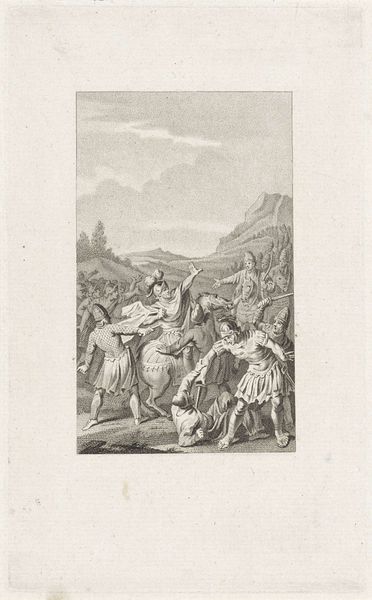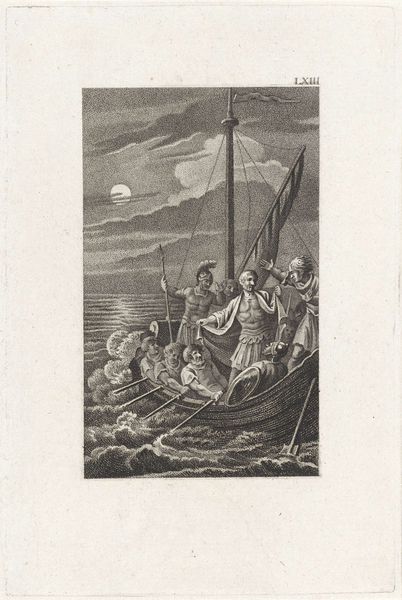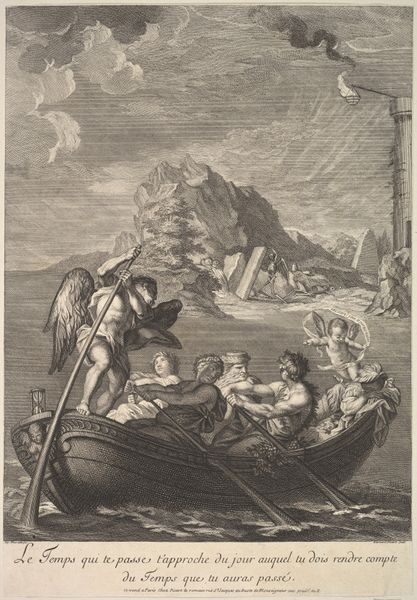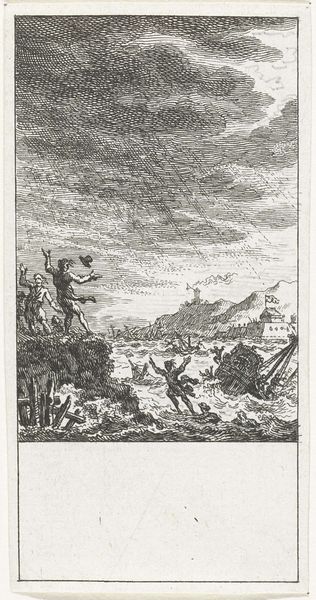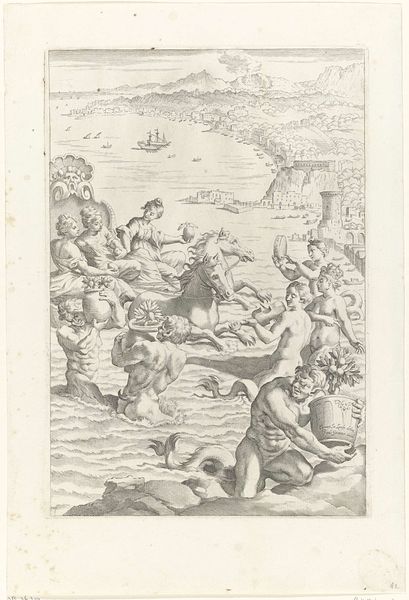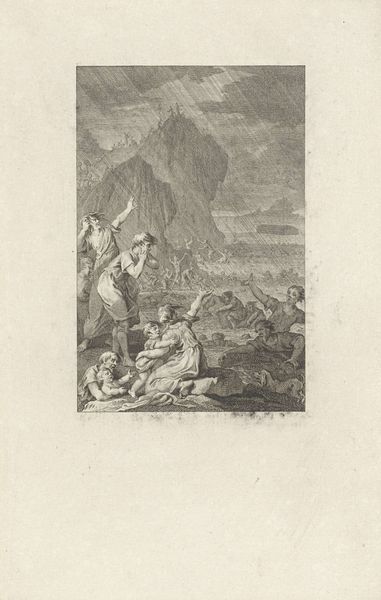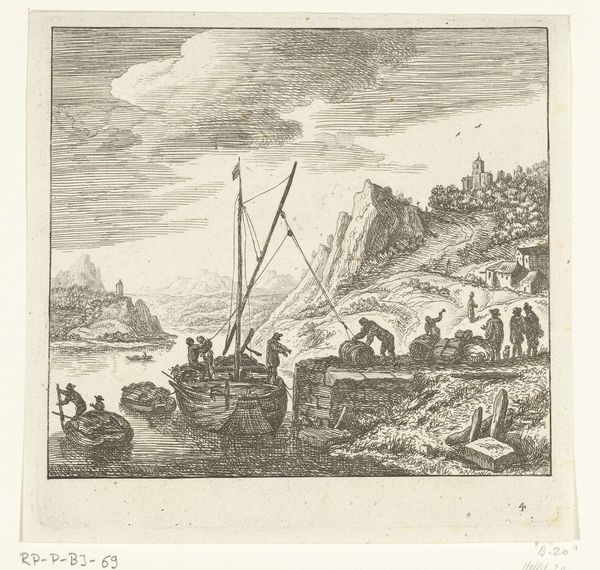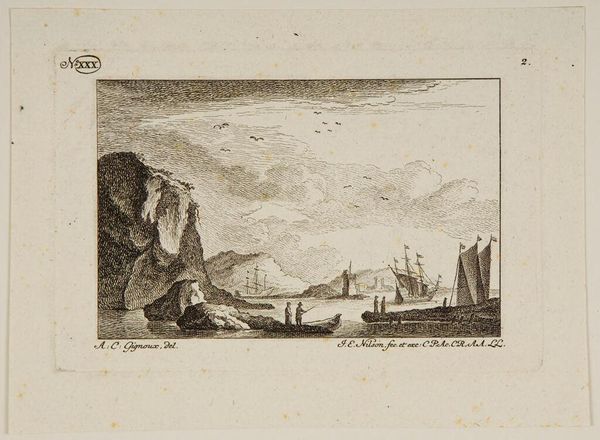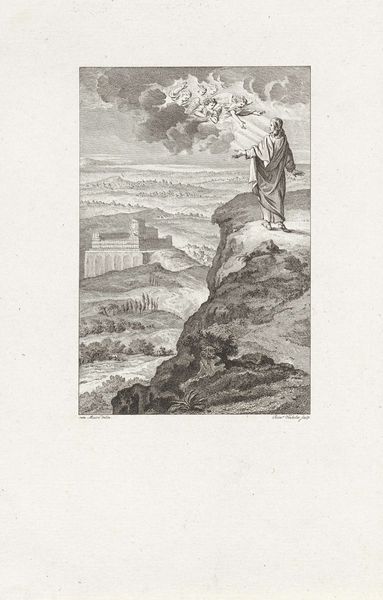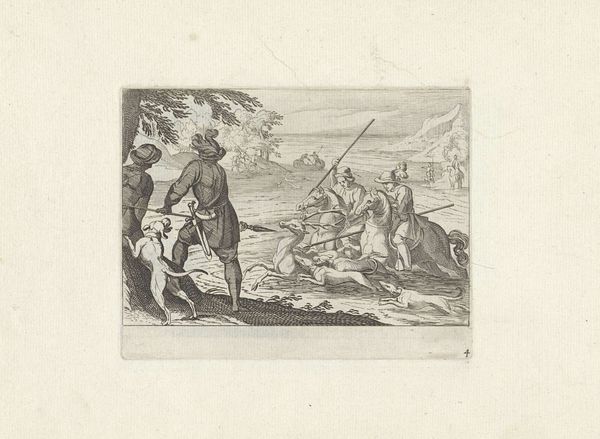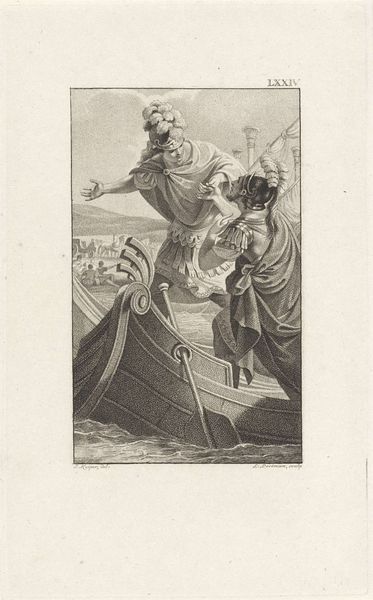
Landing van de Romeinse legers van Julius Caesar in Brittannië 1800
0:00
0:00
ludwiggottliebportman
Rijksmuseum
print, engraving
#
narrative-art
# print
#
old engraving style
#
personal sketchbook
#
history-painting
#
academic-art
#
engraving
#
realism
Dimensions: height 217 mm, width 132 mm
Copyright: Rijks Museum: Open Domain
Editor: We’re looking at “Landing van de Romeinse legers van Julius Caesar in Brittannië,” or "Landing of the Roman Armies of Julius Caesar in Britain", an engraving by Ludwig Gottlieb Portman from 1800, found at the Rijksmuseum. It depicts, as you might guess, Caesar’s troops landing on the shores of Britain. What immediately strikes me is the composition – a flurry of activity leading from the boats to the land. How do you interpret this work? Curator: From a formalist perspective, the piece is quite engaging. Note how Portman uses line to create a sense of movement and chaos. The lines are generally quite short and dense, which is strategically applied. Consider how that linear pattern functions on both the figures in the water and on the implied masses along the coast and in the background. Do you observe any organizing principles behind what initially looks chaotic? Editor: Well, the eye does travel from left to right, following the boats and then the movement of the soldiers. So, it feels like he's guiding us through the narrative. Is that accurate? Curator: Indeed. The arrangement of figures and the use of perspective guide the viewer’s eye. What effect is achieved by the gradation of the landscape, figures, and the sea towards the horizon? Editor: It flattens it all out, compressing the space to increase the feeling of depth without modeling individual shapes with tone or texture. Curator: Precisely. The texture creates dynamism. Ultimately, though, the reduction of value contrast diminishes spatial depth to amplify the linear narrative. Editor: So it’s like the artist uses the line and textural elements of engraving, alongside calculated composition, to lead us through the story of the invasion? Curator: You have rightly discerned Portman's methods and aims. The organization of form creates that movement in the picture plane. It emphasizes what the work *is,* more than it aims to make the viewer imagine being somewhere else, such as on that shoreline. Editor: That emphasis shifts the art's purpose entirely, then. That's fascinating, thank you.
Comments
No comments
Be the first to comment and join the conversation on the ultimate creative platform.
